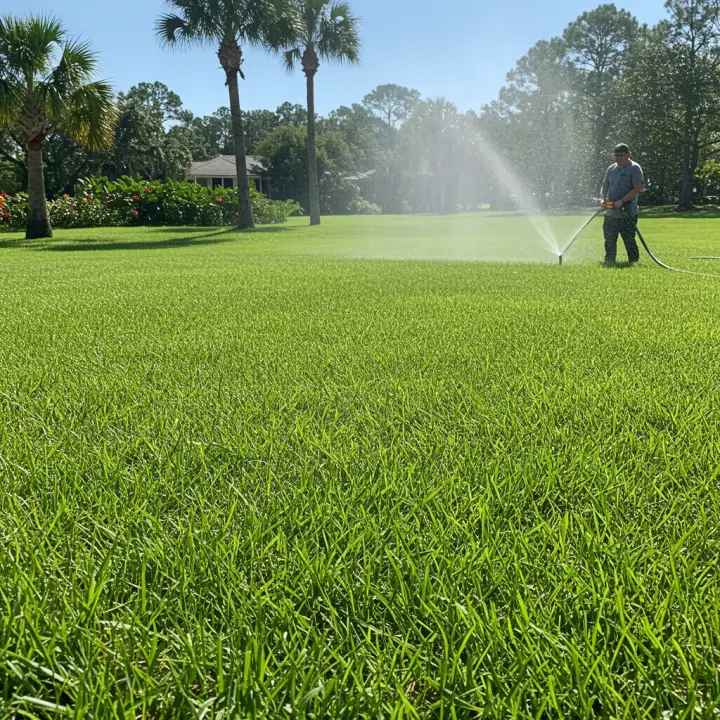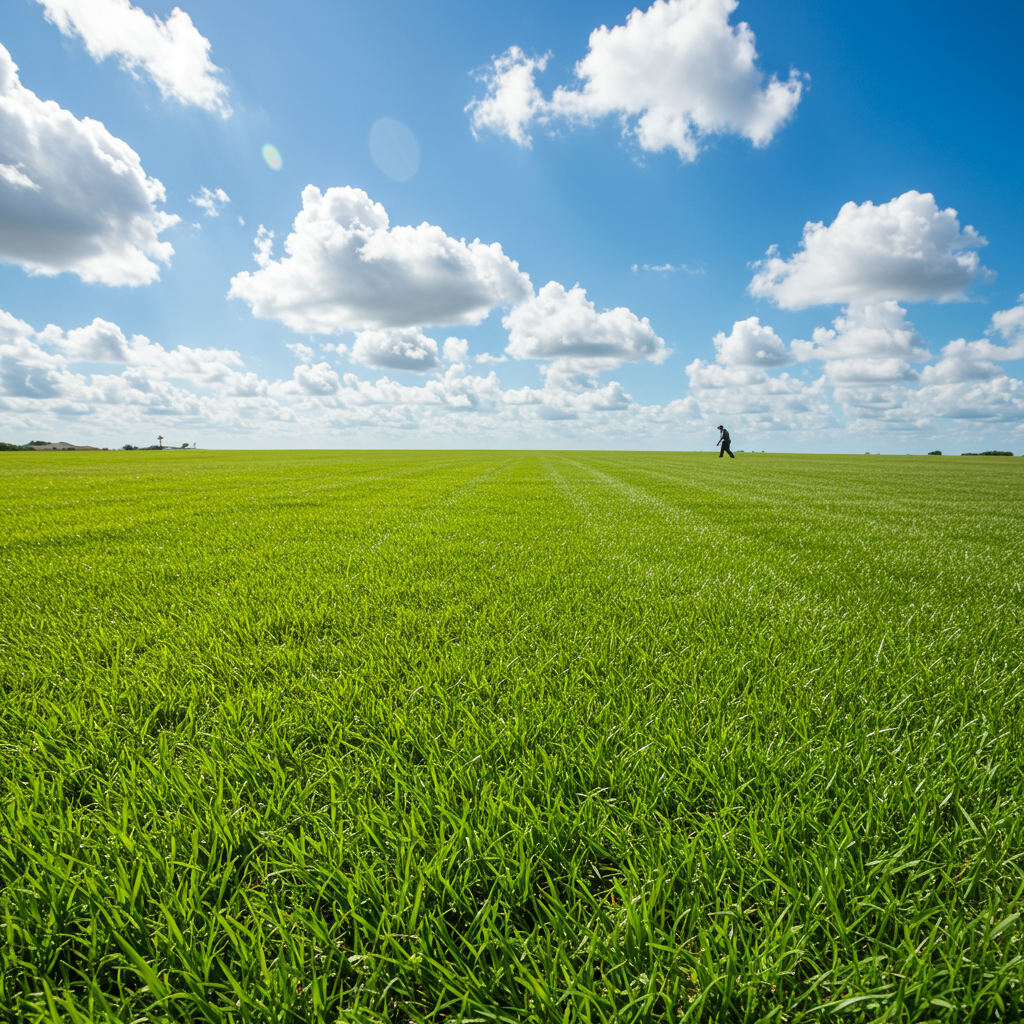This comprehensive guide explores the best time to plant ryegrass in Florida, covering various factors like climate considerations, soil preparation, seeding techniques, and maintenance tips for a lush, green winter lawn.
Want a vibrant green lawn during Florida’s mild winters? Overlaying with ryegrass is a popular solution. This guide explains the optimal planting window, providing step-by-step instructions and essential tips for success.

Understanding Ryegrass and Florida’s Climate
Ryegrass is a cool-season grass that thrives in cooler temperatures, making it an ideal choice for overseeding warm-season lawns in Florida during the winter months. Florida’s subtropical climate presents unique challenges and opportunities for ryegrass growth. While the northern parts of the state experience cooler winters, the southern regions remain relatively warm. This impacts the ideal planting time and requires careful consideration of specific microclimates.
Why Choose Ryegrass for Overseeding?
Winter Color: Ryegrass provides a beautiful green lawn when warm-season grasses go dormant in the cooler months.
Weed Suppression: A dense ryegrass stand can help suppress winter weeds.
Erosion Control: Its extensive root system helps prevent soil erosion.
Improved Soil Health: Ryegrass can add organic matter to the soil as it decomposes, benefiting the overall soil health.
Best Time to Plant Ryegrass in North, Central, and South Florida
The best time to plant ryegrass varies across Florida due to the state’s temperature gradient:
North Florida:
Ideal Planting Time: Mid-October to early November.
Considerations: Temperatures consistently drop earlier in North Florida, providing an optimal environment for ryegrass germination and establishment.
Central Florida:
Ideal Planting Time: Late October to mid-November.
Considerations: Planting slightly later allows for the soil to cool sufficiently, ensuring successful germination.
South Florida:
Ideal Planting Time: November to early December.
Considerations: South Florida’s milder winters necessitate planting later. In some areas, especially coastal regions, ryegrass might struggle to thrive. Consider alternatives like annual bluegrass for these warmer locations.
Preparing Your Lawn for Ryegrass
Proper soil preparation is crucial for successful ryegrass establishment.
Mowing and Dethatching:
Mow Low: Mow your existing lawn very low to ensure good seed-to-soil contact.
Dethatch (if necessary): Remove thatch, the layer of dead grass between the soil and green blades, to improve seed germination.
Soil Testing and Amendments:
Test Your Soil: A soil test reveals nutrient deficiencies and pH imbalances.
Amend Your Soil: Based on the soil test results, amend the soil with the necessary nutrients, particularly phosphorus and potassium.
Leveling and Raking:
Level Uneven Areas: Fill in any low spots or depressions in your lawn.
Rake the Soil: Lightly rake the soil surface to create a fine seedbed.
Seeding and Watering
Proper seeding and watering techniques are essential for promoting healthy ryegrass growth.
Choosing the Right Seed:
Annual Ryegrass: The most common choice for overseeding in Florida due to its rapid establishment and vibrant color.
Perennial Ryegrass: Can persist for multiple seasons in cooler parts of North Florida, but generally performs as an annual in the state.
Seeding Rate and Method:
Seeding Rate: Follow the recommended seeding rate on the seed package. Generally, aim for 5-10 pounds of seed per 1,000 square feet.
Broadcast Spreading: Use a broadcast spreader for even seed distribution.
Watering:
Initial Watering: Water deeply and frequently immediately after seeding to keep the soil moist.
Regular Watering: Reduce watering frequency as the seedlings emerge but continue to water deeply to encourage root development.
Avoid Overwatering: Overwatering can lead to fungal diseases.
Maintaining Your Ryegrass Lawn
Regular maintenance will keep your ryegrass lawn looking lush and healthy throughout the winter months.
Fertilizing:
Starter Fertilizer: Apply a starter fertilizer with high phosphorus content at the time of seeding.
Winter Fertilizer: Apply a balanced winter fertilizer every 4-6 weeks to maintain color and growth.
Mowing:
Mowing Height: Maintain a mowing height of 2-3 inches.
Sharp Blades: Ensure your mower blades are sharp to prevent tearing the grass blades.
Pest and Disease Control:
Monitor for Pests: Watch for common lawn pests like armyworms and grubs.
* Treat Diseases Promptly: Address any fungal diseases like brown patch or dollar spot promptly.
FAQs about Planting Ryegrass in Florida
Q: Can I plant ryegrass in the shade?
A: Ryegrass prefers full sun but can tolerate partial shade. Choose a shade-tolerant variety for shadier areas.
Q: When should I stop mowing my ryegrass?
A: Stop mowing once the ryegrass starts to decline in the spring as temperatures rise.
Q: Will ryegrass reseed itself the following year?
A: Annual ryegrass will not typically reseed itself. Perennial ryegrass may reseed in cooler areas but will likely not persist through the summer heat.
Q: Can I plant ryegrass over existing weeds?
A: It’s best to control weeds before planting ryegrass for optimal results.
Q: Is ryegrass suitable for high-traffic areas?
A: Ryegrass can tolerate moderate foot traffic, but for high-traffic areas, consider using a more durable turfgrass.
Conclusion
Planting ryegrass is an excellent way to enjoy a vibrant green lawn throughout Florida’s mild winters. Understanding the best planting time for your specific region, coupled with proper soil preparation, seeding, and maintenance, will ensure a successful and beautiful winter lawn. Remember to choose the correct ryegrass variety for your needs and follow the recommended care guidelines for optimal results. With a little effort, you can enjoy a lush, green landscape even during the cooler months.

